一、简介
1 调制模型
与QPSK相比,OQPSk调制方式在复数通道Q通道中,插入了一个比特的时延Tb。
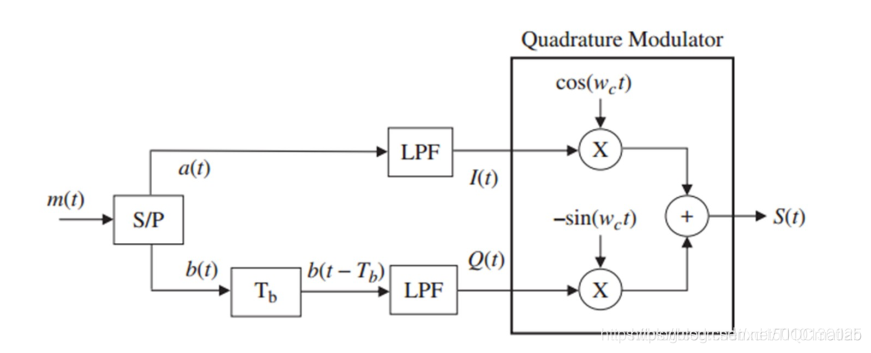
2.优点
OQPSK能够把180度的相移变化变成两个π /2的相位变化,因此相轨道远离了原点
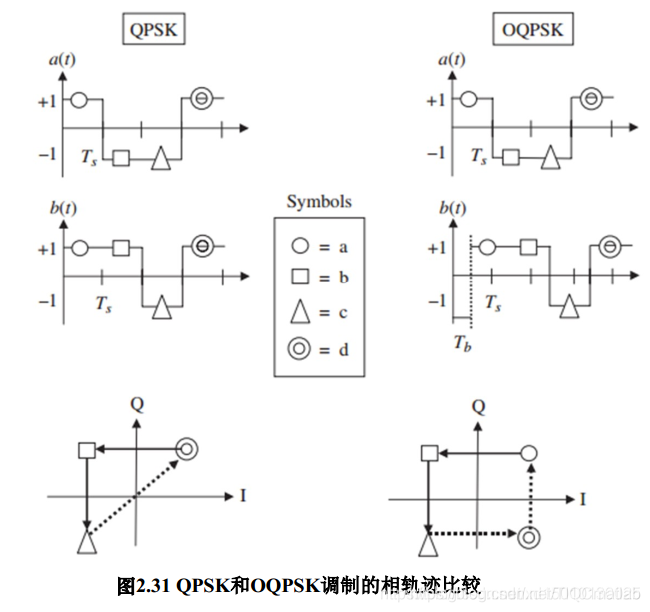
3 解调
因为调制时Q路进行了延时,所以解调时I路进行延时
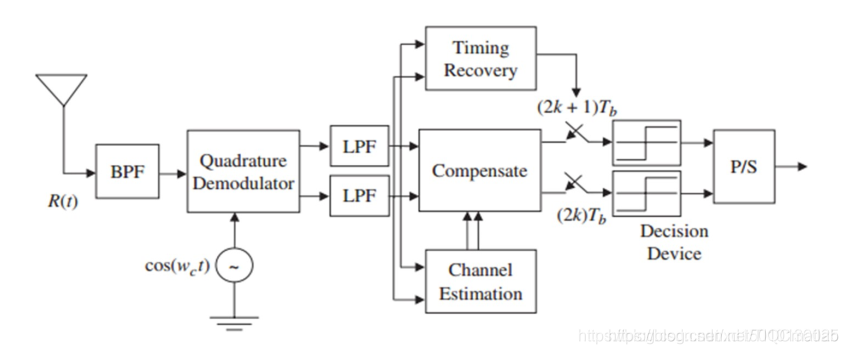
function varargout = GUI_QPSK(varargin) % GUI_QPSK MATLAB code for GUI_QPSK.fig % GUI_QPSK, by itself, creates a new GUI_QPSK or raises the existing % singleton*. % % H = GUI_QPSK returns the handle to a new GUI_QPSK or the handle to % the existing singleton*. % % GUI_QPSK('CALLBACK',hObject,eventData,handles,...) calls the local % function named CALLBACK in GUI_QPSK.M with the given input arguments. % % GUI_QPSK('Property','Value',...) creates a new GUI_QPSK or raises the % existing singleton*. Starting from the left, property value pairs are % applied to the GUI before GUI_QPSK_OpeningFcn gets called. An % unrecognized property name or invalid value makes property application % stop. All inputs are passed to GUI_QPSK_OpeningFcn via varargin. % % *See GUI Options on GUIDE's Tools menu. Choose "GUI allows only one % instance to run (singleton)". % % See also: GUIDE, GUIDATA, GUIHANDLES % Edit the above text to modify the response to help GUI_QPSK % Last Modified by GUIDE v2.5 03-Dec-2018 20:37:56 % Begin initialization code - DO NOT EDIT gui_Singleton = 1; gui_State = struct('gui_Name', mfilename, ... 'gui_Singleton', gui_Singleton, ... 'gui_OpeningFcn', @GUI_QPSK_OpeningFcn, ... 'gui_OutputFcn', @GUI_QPSK_OutputFcn, ... 'gui_LayoutFcn', [] , ... 'gui_Callback', []); if nargin && ischar(varargin{1}) gui_State.gui_Callback = str2func(varargin{1}); end if nargout [varargout{1:nargout}] = gui_mainfcn(gui_State, varargin{:}); else gui_mainfcn(gui_State, varargin{:}); end % End initialization code - DO NOT EDIT % --- Executes just before GUI_QPSK is made visible. function GUI_QPSK_OpeningFcn(hObject, eventdata, handles, varargin) % This function has no output args, see OutputFcn. % hObject handle to figure % eventdata reserved - to be defined in a future version of MATLAB % handles structure with handles and user data (see GUIDATA) % varargin command line arguments to GUI_QPSK (see VARARGIN) % Choose default command line output for GUI_QPSK handles.output = hObject; s=round(rand(1,100)); %生成二进制基带数据并画出基带信号图 N=1:100; %figure(1);subplot(311);stem(N,s);title('基带信号');grid on; Ps=1; M=4; %QPSK星座图 d=sqrt(Ps)*sin(pi/M); A=[1+1*i,-1+1*i,-1-1*i,1-1*i]*d; %subplot(312);scatter(real(A),imag(A),'filled');title('QPSK星座图');hold on; theta=0:pi/100:2*pi; x=cos(theta); y=sin(theta); %plot(x,y);grid on; Maptable=[0 0;0 1;1 1;1 0]; %QPSK格雷码比特映射 for j=1:2:100 for m=1:M if isequal(s(j:j+1),Maptable(m,:)) Qu((j+1)/2)= (2*m-1)*pi/4; x((j+1)/2)=A(m); break end end end %基带数据s携带的信息映射到X[n] Am=1; %载波调制 T=0.0001; fc=6/T; Smpl=1000; deltaT=T/Smpl; %连续时间离散化间隔 Ns=5; %画出Ns个符号的波形 t=deltaT:deltaT:Ns*T; %离散时间序列 for j=1:Ns index=(j-1)*Smpl+1:j*Smpl; %第i个符号对应的离散时间序号 g(index)=1; %矩形脉冲成型 X(index)=Am*g(index).*cos(2*pi*fc*t(index)+Qu(ceil(index/100.01))); %载波调制信号 end %subplot(313);plot(t,X);title('QPSK调制信号波形'); SNR_dB=15; %定义信噪比 SNR=10^(SNR_dB/10); %定义线性信噪比 Ps=1; %发射功率 Pn=Ps/SNR; %噪声方差 x=x(1:50); z=sqrt(Pn/2)*(randn(size(x))+randn(size(x))*i); %生成白噪声 h=1; %AWGN信道下,信道增益h=1 y=h*x+z; %基带接受信号 %figure(2);subplot(211);scatter(real(y(1:10)),imag(y(1:10)),'filled'); %y的星座图title('QPSK接收星座图'); for j=1:length(y) Dist=abs(y(j)-A); %第j个接受信号与各星座图点的距离 [~,Index]=min(Dist); %找到距离最近的点 x_est(j)=A(Index); %得到发射调制信号的估计 s_est(2*j-1:2*j)=Maptable(Index,:); %得到比特数据的估计 end W=1:100; %subplot(212);stem(W,s_est);title('QPSK解调后信号'); for n=1:25 Pe_t(n)=2*sqrt(2)/4*erfc(sqrt(2*n)*sin(pi/M))-sqrt(2)/4*erfc(sqrt(2*n)*sin(pi/M))* sqrt(2)/4*erfc(sqrt(2*n)*sin(pi/M)); Pb_t(n)=0.5*Pe_t(n); end PESUM=0; PBSUM=0 for n=1:25 for m=1:1000 SNR=n; Ps=1; Pn=Ps/SNR; z=sqrt(Pn/2)*(randn(size(x))+randn(size(x))*i); h=1; y=h*x+z; for j=1:length(y) Dist=abs(y(j)-A); [~,Index]=min(Dist); x_est(j)=A(Index); s_est(2*j-1:2*j)=Maptable(Index,:); end for k=1:100 if(s(k)+s_est(k)==1) PBSUM=PBSUM+1; end end for k1=1:50 if isequal(x(k1),x_est(k1)) PESUM=PESUM+0; else PESUM=PESUM+1; end end end Pb(n)=PBSUM/1000/100; Pe(n)=PESUM/1000/50; PBSUM=0; PESUM=0; end SNRX=1:25; %figure(3);plot(SNRX,Pb); hold on;plot(SNRX,Pe);scatter(SNRX,Pe_t);scatter(SNRX,Pb_t, 'filled'); %xlabel('信噪比 SNR(r/dB)');title('AWGN信道下误码率与误符号率曲线'); axis([1 25 0 1]);grid on;hold off; H=sqrt(1/2)*(randn+i*randn); Y=H*x+z; %figure(4);subplot(211);scatter(real(Y(1:10)),imag(Y(1:10)),'filled');title('4PSK信道均衡前星座图'); Y1=Y/H; %subplot(212);scatter(real(Y1(1:10)),imag(Y1(1:10)),'filled');title('4PSK信道均衡后星座图'); PESUM1=0; PBSUM1=0 for n=1:25 for m=1:1000 SNR=n; Ps=1; Pn=Ps/SNR; z=sqrt(Pn/2)*(randn(size(x))+randn(size(x))*i); Y1=(H*x+z)/H; for j=1:length(Y1) Dist=abs(Y1(j)-A); [~,Index]=min(Dist); x_est1(j)=A(Index); s_est1(2*j-1:2*j)=Maptable(Index,:); end for k=1:100 if(s(k)+s_est1(k)==1) PBSUM1=PBSUM1+1; end end for k1=1:50 if isequal(x(k1),x_est1(k1)) PESUM1=PESUM1+0; else PESUM1=PESUM1+1; end
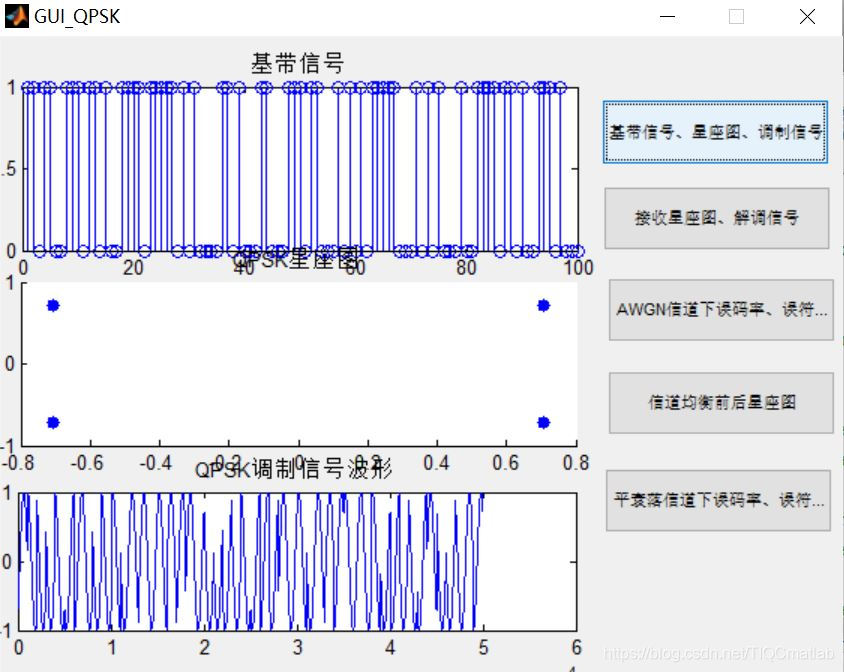

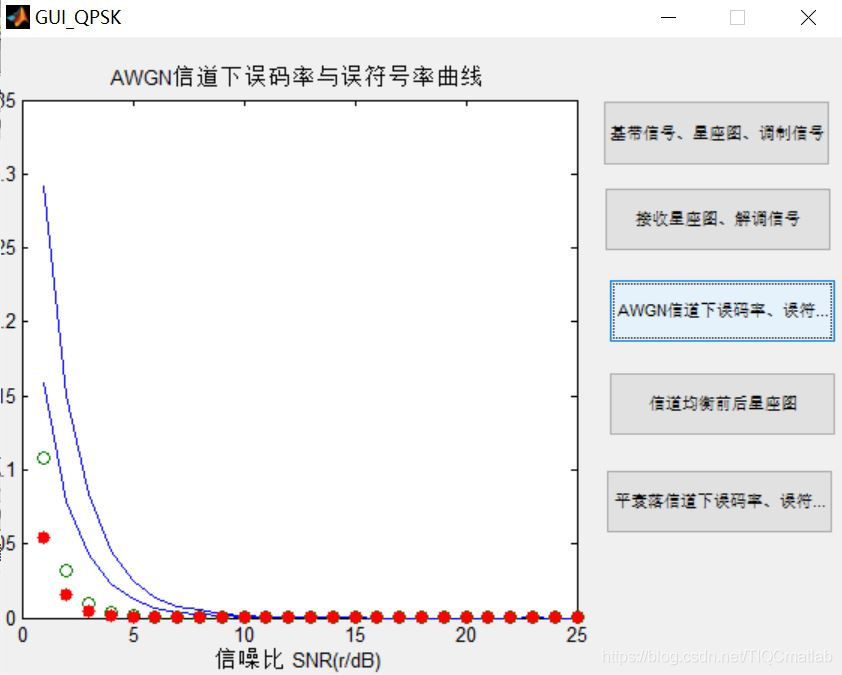
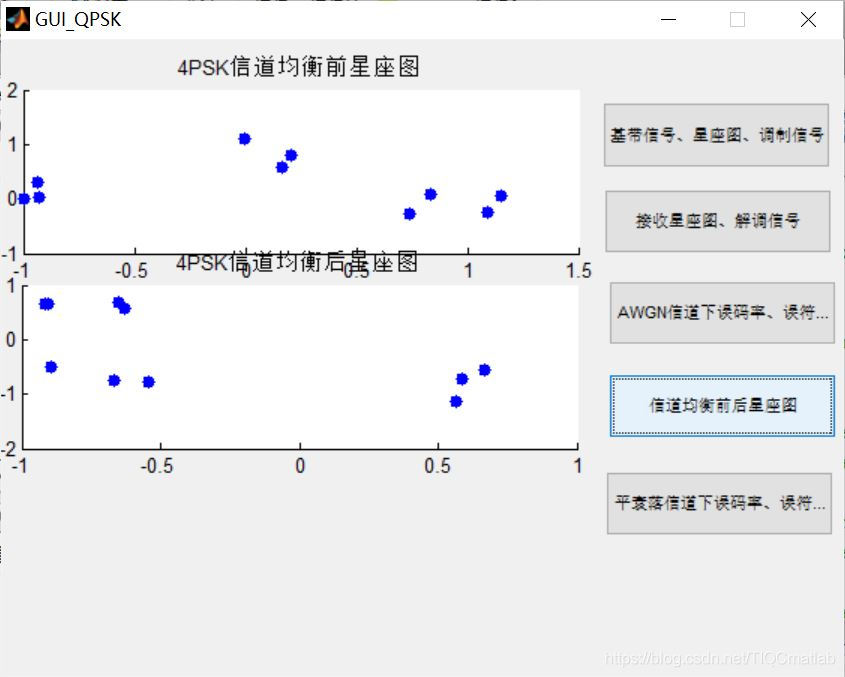
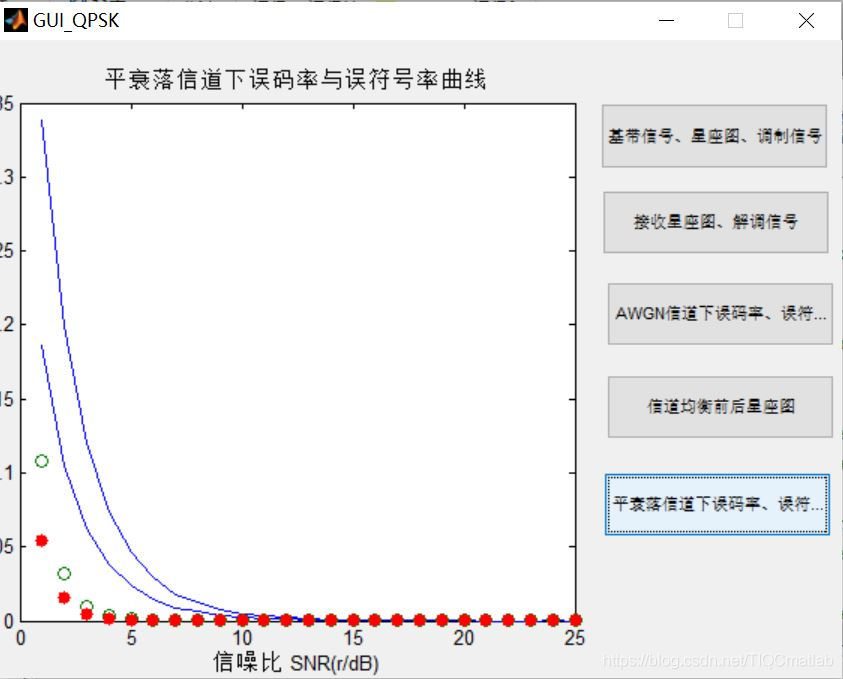
免责声明:本文系网络转载或改编,未找到原创作者,版权归原作者所有。如涉及版权,请联系删